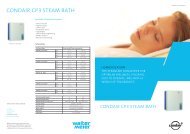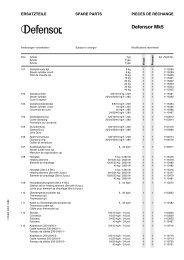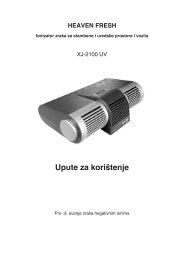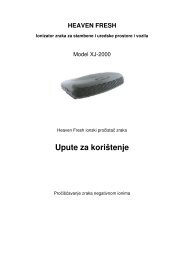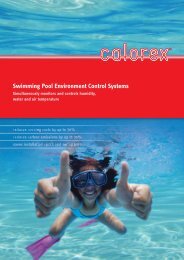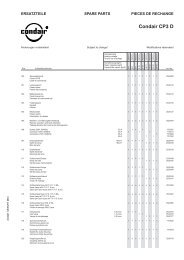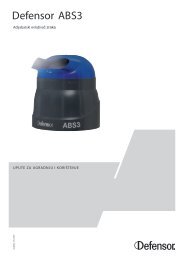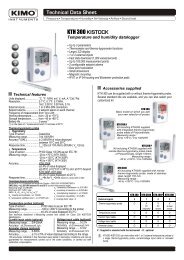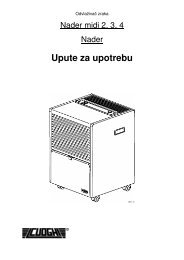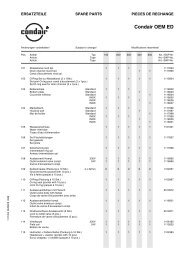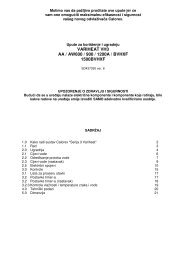Condair Esco
Condair Esco
Condair Esco
You also want an ePaper? Increase the reach of your titles
YUMPU automatically turns print PDFs into web optimized ePapers that Google loves.
Figure 2 Installation upstream of fan<br />
Downstream obstacle: fan<br />
Figure Installation downstream of fan in duct<br />
Downstream obstacle: bend<br />
Example for operation with outside air:<br />
Air velocity<br />
w = 3 m/s<br />
Air temperature before humidifier<br />
t = 13°C<br />
Humidity increase<br />
∆x = 6 g/kg<br />
Closest obstacle: fine filter F<br />
Result:<br />
Humidification distance<br />
(from diagram): B F ≅ 2,3 m<br />
In the humidification distance diagram 1, empirically calculated standard<br />
values, based on lab tests, are used to express the humidification distances<br />
BN, BF or BS to downstream obstacles in dependence of the above<br />
mentioned values. The air temperature t, before the distribution pipe, must<br />
not fall below the given values t min, in order to avoid supersaturating the air<br />
(N), which causes wetting of the filters (F, S) when the relative humidity is<br />
increased accordingly.<br />
The maximum steam mass flow -the most important prerequisite for<br />
determining the humidification distance- is based on the steam pipe dimensioning<br />
on page 26.<br />
Figure 3 Installation downstream of fan<br />
Downstream obstacles: silencer + fine filter<br />
Figure Duct installation<br />
Downstream obstacle: particle filter<br />
Terminology of the humidification distance<br />
Mist zone<br />
Normal<br />
obstacles<br />
Fine filters<br />
Particle filters<br />
Measuring point<br />
3




